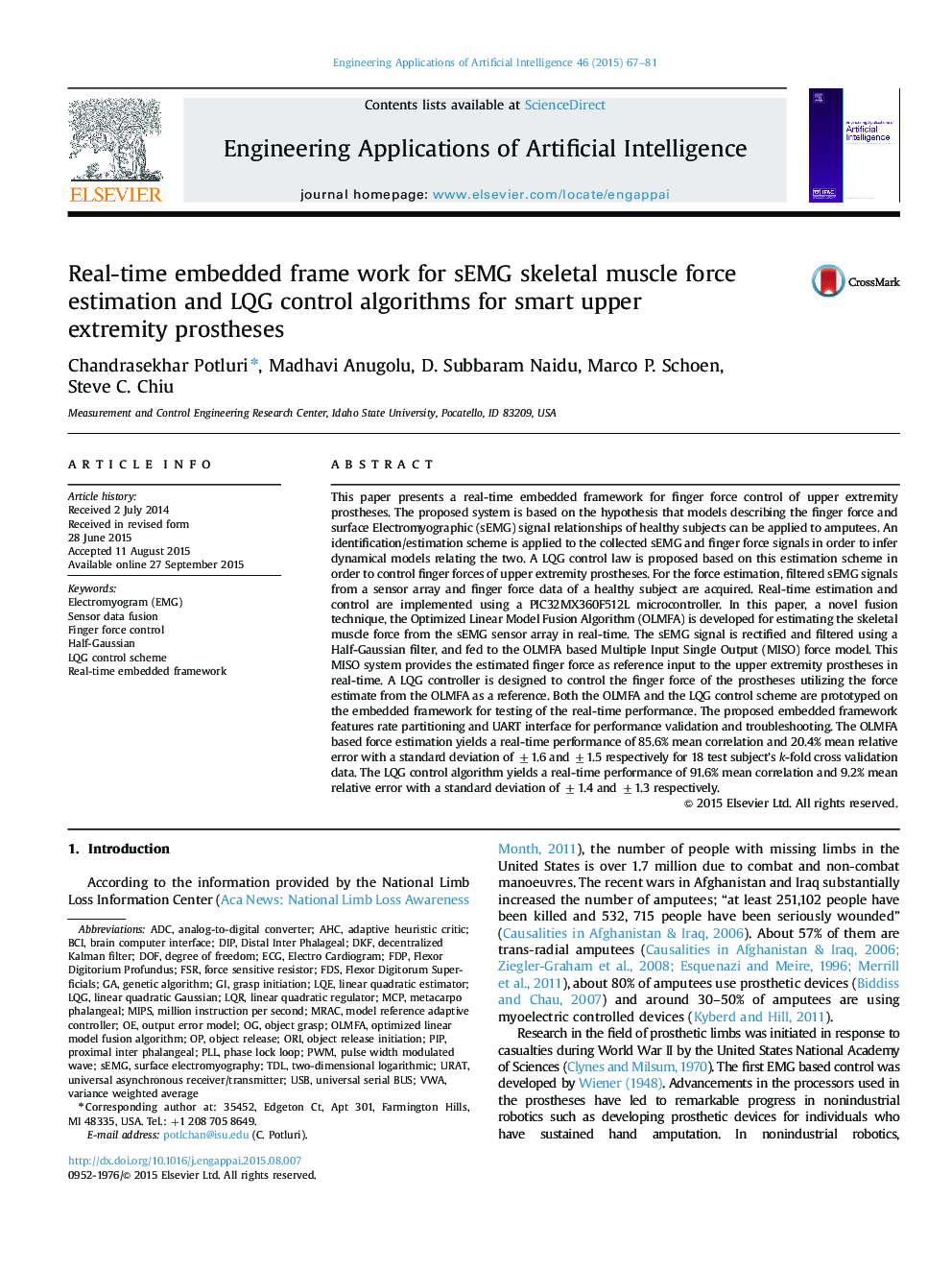| Article ID | Journal | Published Year | Pages | File Type |
|---|---|---|---|---|
| 380261 | Engineering Applications of Artificial Intelligence | 2015 | 15 Pages |
•The novelty lies with the proposed Optimized Linear Model Fusion Algorithm (OLMFA).•The novel OLMFA is used as the input to a LQG and MRAC control scheme and is implemented in real-time on a microcontroller.•An embedded test bed is proposed to rapid prototype the LQG and MRAC control schemes and validate them on the prosthetic hand prototype.
This paper presents a real-time embedded framework for finger force control of upper extremity prostheses. The proposed system is based on the hypothesis that models describing the finger force and surface Electromyographic (sEMG) signal relationships of healthy subjects can be applied to amputees. An identification/estimation scheme is applied to the collected sEMG and finger force signals in order to infer dynamical models relating the two. A LQG control law is proposed based on this estimation scheme in order to control finger forces of upper extremity prostheses. For the force estimation, filtered sEMG signals from a sensor array and finger force data of a healthy subject are acquired. Real-time estimation and control are implemented using a PIC32MX360F512L microcontroller. In this paper, a novel fusion technique, the Optimized Linear Model Fusion Algorithm (OLMFA) is developed for estimating the skeletal muscle force from the sEMG sensor array in real-time. The sEMG signal is rectified and filtered using a Half-Gaussian filter, and fed to the OLMFA based Multiple Input Single Output (MISO) force model. This MISO system provides the estimated finger force as reference input to the upper extremity prostheses in real-time. A LQG controller is designed to control the finger force of the prostheses utilizing the force estimate from the OLMFA as a reference. Both the OLMFA and the LQG control scheme are prototyped on the embedded framework for testing of the real-time performance. The proposed embedded framework features rate partitioning and UART interface for performance validation and troubleshooting. The OLMFA based force estimation yields a real-time performance of 85.6% mean correlation and 20.4% mean relative error with a standard deviation of ±1.6 and ±1.5 respectively for 18 test subject’s k-fold cross validation data. The LQG control algorithm yields a real-time performance of 91.6% mean correlation and 9.2% mean relative error with a standard deviation of ±1.4 and ±1.3 respectively.
